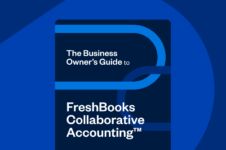So, why do you need working capital? More importantly, how do you get it?

Whether you’re struggling to grow your business or take advantage of bigger projects, working capital can help.
Working capital supports your daily running costs, funds larger projects, and can help you remain afloat during even the most trying times.
Here we explore everything you need to know about working capital so that you can survive tough economic times and take advantage of those big opportunities when they do arise.
Table of Contents
What Is Working Capital?
The money you have on hand—whether profit-savings, a bank loan, or other means of raising capital—is your working capital. Working capital funds your day-to-day operations, helps you pay rent and staff, and covers other operating expenses.
Basically, working capital is the funds you have to cover your short-term expenses.
Net Working Capital vs. Gross Working Capital
You may have also heard the term net working capital. Net working capital is the difference between current assets and current liabilities on your balance sheet. It’s the measure of your company’s liquidity and ability to meet short-term obligations and fund business operations.
Ideally, you have more current assets than current liabilities. This would give you a positive net working capital.
Alternatively, you can calculate and evaluate gross working capital. This refers to the sum of all your assets that can be converted to cash within a 12-month period.
Since gross working capital doesn’t take into account your liabilities, net working capital is a more accurate picture of where your business stands. For that reason, in this article when we refer to “working capital” we mean net working capital.
When Do You Need Working Capital?
Your business needs a certain amount of working capital to pay the bills, pay your people, keep your cash flow strong, and ultimately stay solvent.
But you may also need additional working capital at different times. This is where calculating your working capital becomes essential. For example, you may need more working capital:
- To keep your business afloat when cash flow is slow. Let’s say you run a seasonal business, like a lawn care company. If you live in a northern climate, the bulk of your business will be in the spring and summer months. During that time you may need to bring on extra staff or pay for more equipment. And in the off-season, when revenue is lower, you may have higher expenses to account for.
An economic slowdown is another scenario that might impact cash flow and require more working capital. - To fund growth or big projects. If you work on a project-by-project basis, you need to plan for ebbs and flows in your cash flow. For example, when you start a large project that pays on completion, you need capital to keep you going during the interim.
So, how can you start measuring your working capital?
How to Calculate Working Capital
The working capital formula is simple:
working capital = current assets – current liabilities
Current assets are cash and assets you can convert into cash within a year (this doesn’t include fixed assets, which are considered long-term assets on your balance sheet). These assets comprise accounts receivable, inventory, and short-term investments.
Current liabilities (including accrued expenses or accrued liabilities) are short-term liabilities (debts or accounts) that you need to settle within a year, such as accounts payable, overdrafts, sales tax, payroll expenses, and wages.
To ensure positive short-term financial health, you should aim to have more current assets than liabilities or positive working capital. If current assets don’t exceed current liabilities, you have a deficit, you might run into cash flow problems, and may not be able to pay creditors.
Even a profitable business can struggle. Cash may be tied up in assets such as debtors or raw materials, and an inability to convert them back into cash signals weak liquidity.
But even after calculating your working capital, how do you know what amount is suitable? Enter the working capital ratio.
Working Capital Ratio and What It Means
The ratio is a measure of the financial health of your business. The formula is:
working capital ratio = current liabilities ÷ current assets
The ratio helps you determine if you have enough operating capital to cover your short-term liabilities, a.k.a. debt. Anything below 1 indicates negative working capital. Anything above 2 suggests your business isn’t investing excess working capital and assets and has too much cash tied up in inventory, raw materials, or debtors.
A ratio of between 1.2 and 2 is usually sufficient. A declining ratio over the long term could be a red flag and could require immediate action. For example, it might indicate that your collections process is slow, which would show in your accounts receivable.
How to Get Working Capital (or Address Negative Working Capital)
If you don’t have the working capital to cover your costs, you’ll have to find it or risk possible project failure. You could get a bank loan, but the application process takes a while—and even then, approval isn’t guaranteed.
The solution is to find funding elsewhere. Here are 5 ways to raise cash quickly and get more working capital:
1. Speed Up the Collection Process
Working capital shortages often arise due to delays in payments from clients. These delays will lengthen your working capital cycle. Your working capital cycle is the time it takes to convert current assets and current liabilities into cash. A longer working capital cycle means money is tied up in current liabilities and current assets for longer.
For example, if you pay suppliers in 30 days, but it takes you 90 days to collect receivables, your cycle will be 60 days. Your goal is to reduce that cycle and reduce the amount owed in your accounts receivable. One way you can do this is by investing in solutions and strategies to speed up the collection process:
- Track collection time with clients so that you know which clients are the slow payers.
- Renegotiate payment terms with existing clients, so they pay you sooner.
- Improve your invoicing procedures by investing in tools that help you get paid faster.
- Make payment easy for clients by accepting their preferred payment method, such as credit cards. FreshBooks, for example, accepts Amex, Mastercard, and Visa.
- Encourage early payment by rewarding and penalizing clients. Include a discount for early payment and penalties for late payment in the form of an interest fee. But make sure you understand when it’s suitable to charge late payment fees.
- Include the correct details on the invoice to avoid back-and-forth emails that only delay payment. For example, make sure you address it to the right person and include the PO number.
2. Request a Deposit
There’s nothing more frustrating than a project coming to a halt due to a money shortage. Asking for an up-front deposit gives you working capital to cover costs for the duration of the project.
Deposits also minimize the chances of non-payment. You can request deposits via email and have clients pay it to your bank account.
While deposits will give you extra cash, charging a deposit isn’t always the best option. For example, you may charge a deposit for a client, but waive it over time as you build a relationship and learn to trust them.
3. Apply for SBA Loans
SBA loans are loans that the Small Business Administration guarantees. Instead of offering these loans, the SBA reduces the risks for banks through a guarantee.
These loans are ideal for long-term working capital requirements. Although they provide a safety net for big projects, the approval process takes time, and you have to meet strict requirements:
- You have to have been in business for 2 years or more
- You need a credit rating of more than 680 to show you can pay off the loan
Nevertheless, they’re worth pursuing as interest rates are low and usually between 6-8%. I say “usually” because the SBA also offers disaster loans at lower interest rates:
- Loans through the Payment Protection Program were designed to help small businesses struggling as a result of COVID-19. These loans have a maximum interest rate of 10% over 10 years. You can apply for this loan through an SBA-approved vendor. To find one, visit the SBA website.
- The Economic Injury Disaster Loan (EIDL) program was designed to help small businesses who fall within an area declared as a disaster zone. Interest rates are fixed at 3.75%, and the maximum loan term is 30 years. Again, you can apply for assistance on the SBA website.
For more information on all SBA loans and to see if you’re eligible, visit the SBA loan page.
4. Consider Invoice Financing
You shouldn’t confuse invoice financing with traditional factoring. With conventional factoring you enter into long-term agreements, fees are high, and they’re intrusive (the provider contacts your clients).
However, with invoice financing, you sell unpaid invoices to a third party and get the cash immediately. You pay interest against the invoice value with interest rates starting as low as 2.5%.
There are many companies online that offer this service, including Fundbox, a FreshBooks partner.
3 Working Capital Watch-Outs
There are various lending practices you need to be aware of and sources of funding you should avoid that try to take advantage of a company’s working capital problems.
1. Beware of Hidden Fees
Often the advertised cost of the funding is not the actual cost. Many lenders charge hidden fees such as subscription and inactivity fees. So, read the fine print and understand the actual cost to avoid unexpected and often high fees.
2. Avoid Large Lines of Credit You Don’t Need
Make sure you don’t over-finance. Many businesses get larger and larger lines of credit, when, in fact, they only need a little. Talk to your accountant, provide them with your balance sheet and other financials, and get professional advice as to how big a line of credit you need and what the credit terms should entail.
3. Avoid Financing New Customers With Revenue From Old Ones
Many small business owners use the revenue from a past customer to finance the next customer. If you do this often, you can quickly run into cash flow problems.
The point is: Whenever you’re borrowing money, do your own thorough due diligence and avoid making bad decisions out of a sense of desperation.
Key Takeaways on Working Capital
Working capital is crucial for your day-to-day, funding your business growth, and helping you out during tough economic times.
That’s why it’s vital to get to grips with it: Understand what it is, learn how to calculate it with the working capital formula, and know where to get funding.
How you go about it will depend on your business requirements. You may need to speed up collection procedures, request an upfront deposit, apply for a short or long-term loan, or use invoice financing.
Whatever you decide, rest easy knowing you have working capital to grow during the good times and survive during the tougher times.
To learn more about working capital, download our free Working Capital eBook.
This post was updated in May 2021.

Written by Daniel Reiter, Former Editor-in-Chief, FreshBooks
Posted on August 28, 2020

 7 Small Business Cash Flow Problems and How to Solve Them
7 Small Business Cash Flow Problems and How to Solve Them The 7 Best Financial Ratios for a Small Business
The 7 Best Financial Ratios for a Small Business Automated Billing Gives You Freedom to Focus on Service & Growth
Automated Billing Gives You Freedom to Focus on Service & Growth





